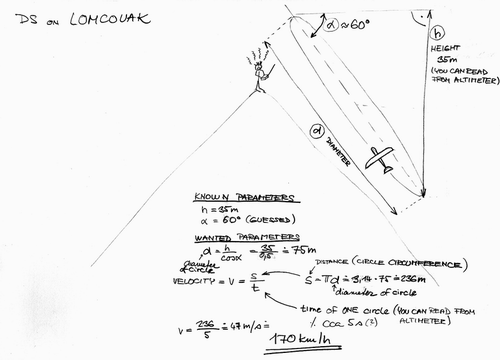Right figure you can see one of my first altitude logs.
LoLo was in my midsize hotliner Optima II. Wing span 1250mm (49" ), 12 cells Sanyo 1250SCR, brushless Phasor 30-3, prop Aeronaut CamCarbon 10x6.
Sure I was happy that design is finished and my intention was to test it hard.
In forth climbing
you can see I reached height 536m. I had BIG BIG problems to control such
small airplane in this altitude...
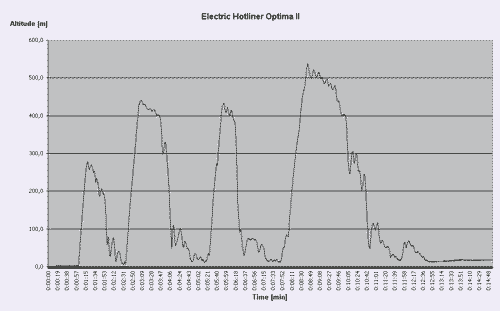
On 5/7/2002 Friday afternoon in Holic (Slovakia). Day before Czech and Slovak F3B Championship.
This is altitude log from my flight with BigSting alias Caligulla (3.15m). Hard to explain experience from this flight but anyhow it was heartbreaking!!
The highest descent (average from 5 adjacent values) was -74m/s eg. 270km/h. Sure speed of BigSting was higher while it was not possible to fall down from the sky just apeak.
I guess a descent
angle around 60-70 deg. and the speed could be somewhere near 400 km/h?
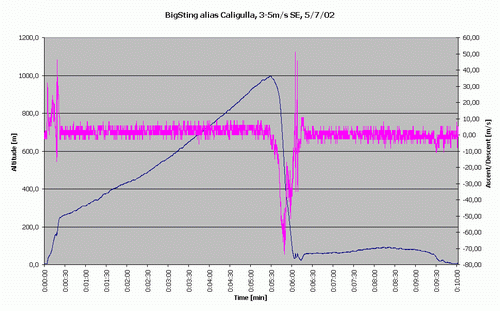
But the main reason why I speak about LoLo are pure silent flight disciplines; F3B, F3J and F3F (my interest).
Here I found LoLo's services invaluable. Right figure you can see for example start analysis of my New Sting
I was tuning trailing edge deflection. It was evident that too much flaps and ailerons doesn't work.
Optimum was somewhere
nearby 6-7mm trailing edge, interesting. Good to know.
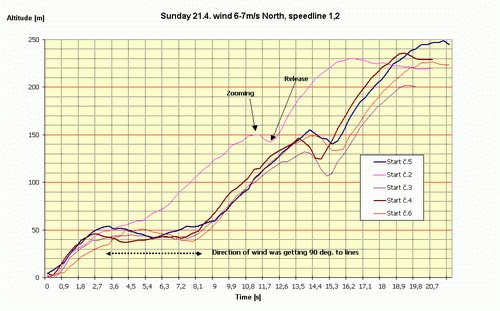
Start analysis. Here I made already some formatting and zooming in Excel.
As you can see here is sampling rate of LoLo 0.3s.
For start is better to switch to 0.1s sampling rate.
A bit more detailed
view to one start. Sampling rate of altimeter was switched to 0.1s. Good
for start analysis.
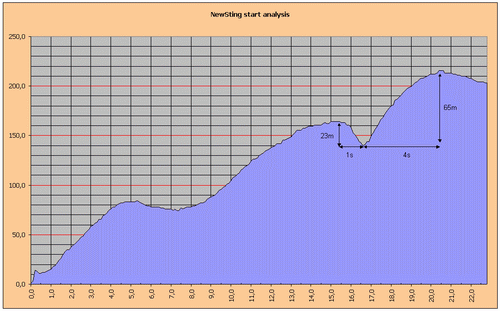
Also interesting graph.
It's speed record. Note peaks on turning bases A or B (red arrows).
There is quite interesting "ballast" product of pressure sensor.
You can see when I was turning while G was so high that sensor produced altitude increase which marked turning.
Sure (or hopefully;-)
I was heading down when turning, not up...
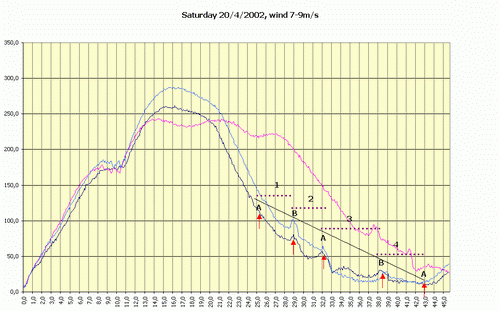
Just ordinary thermaling
You are falling down after launch and after 3 minutes there is hot air
allotment for you. When I was in point A, I guessed height about 600-700m,
New Sting was really small. No, it was mistake! Only cca 220m!
Thanks to a bit stronger wind I was circling down the wind and I was more far from me than higher. Interesting! Using protractor we could calculate (some trigonometry) distance on the ground and in the air.
Just circling is tedious
therefore there is point B, switching to Speed Phase and a little bit
whistling :))
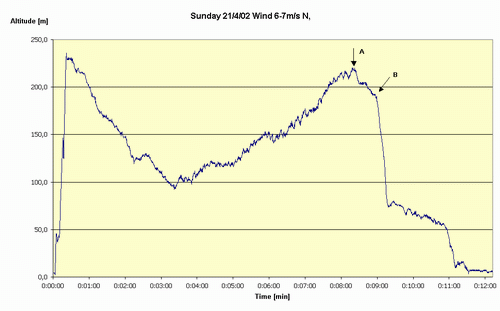
This was tough day. My intention was to be on the airfiled before sunrise. It 's getting up around 4:00 8-)
But it was again quite interesting experience with my F3B/F3F ship and altimeter.
Using more trailing edge down increased time in the air significantly but up to certain point-sure expected.
But where is this
point? Altimeter helped me to find it exactly.
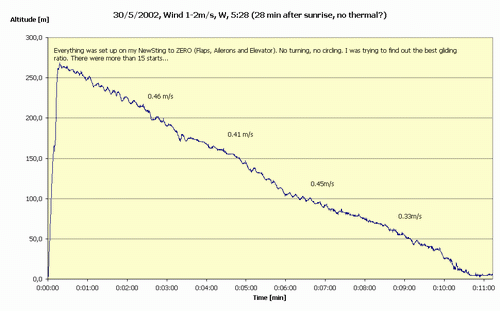
Dynamic Soaring, perhaps the youngest discipline of F3X guys.
Yeahh, I also tried this heartbreaking temptation.
Sure I don't fly without LoLo even on slope side and therefore you can see altitude log from my first DS attempt.
In first half of log you can see my trials when zooming behind the slope but after fourth air raid I was starting to DS!!!
Wouuuu!!
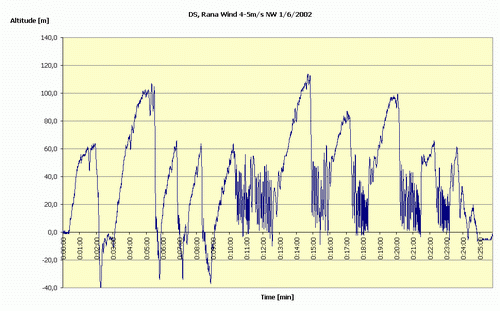
- From graph we can guess average diameter of DS circle. I guessed 35m.
- Let's say average duration of one circle is 5s.
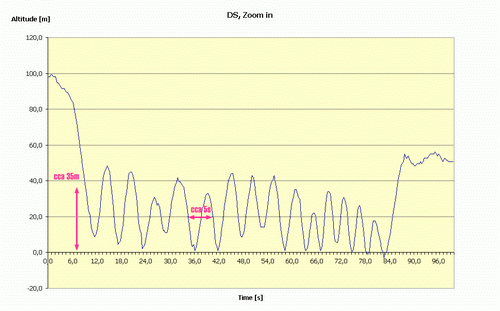
- I guessed the angle alpha was 60 degrees. See picture
- Resulting speed was guessed about 170km/h (105mph) See picture
It's clear that these method is very(?) inaccurate, but gives me rough
idea what's going on in the air. Needles to point out for instance that
I was DS more or less under me (negative altitude), but from altitude
log you see only positive values. High G are perhaps resulting mentioned
offset of altitude. Hopefully absolute value of height is similar to real
altitude but only shifted up. Would be very interesting to compare this
calculation with "real life" radar gun measurements...
